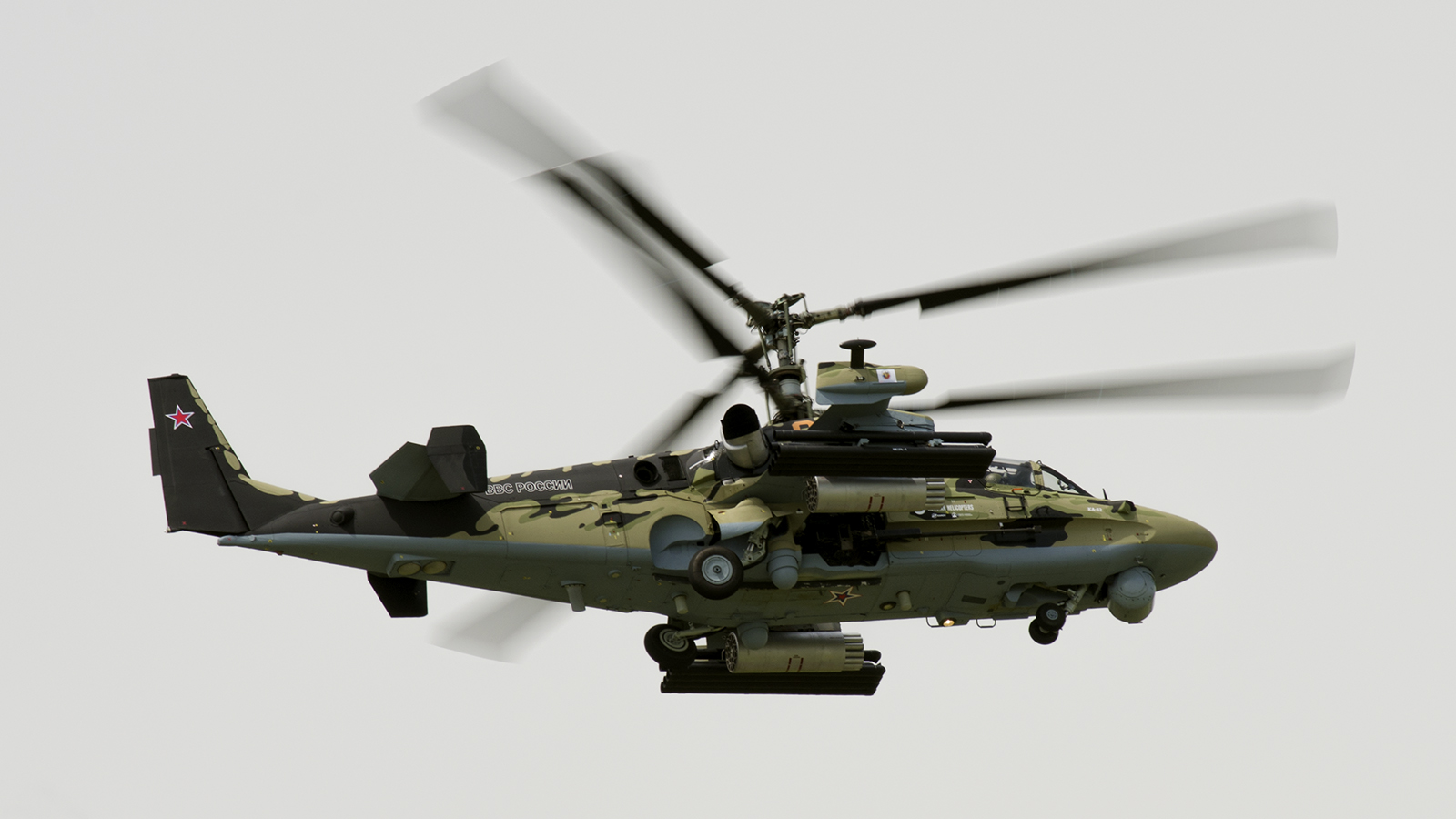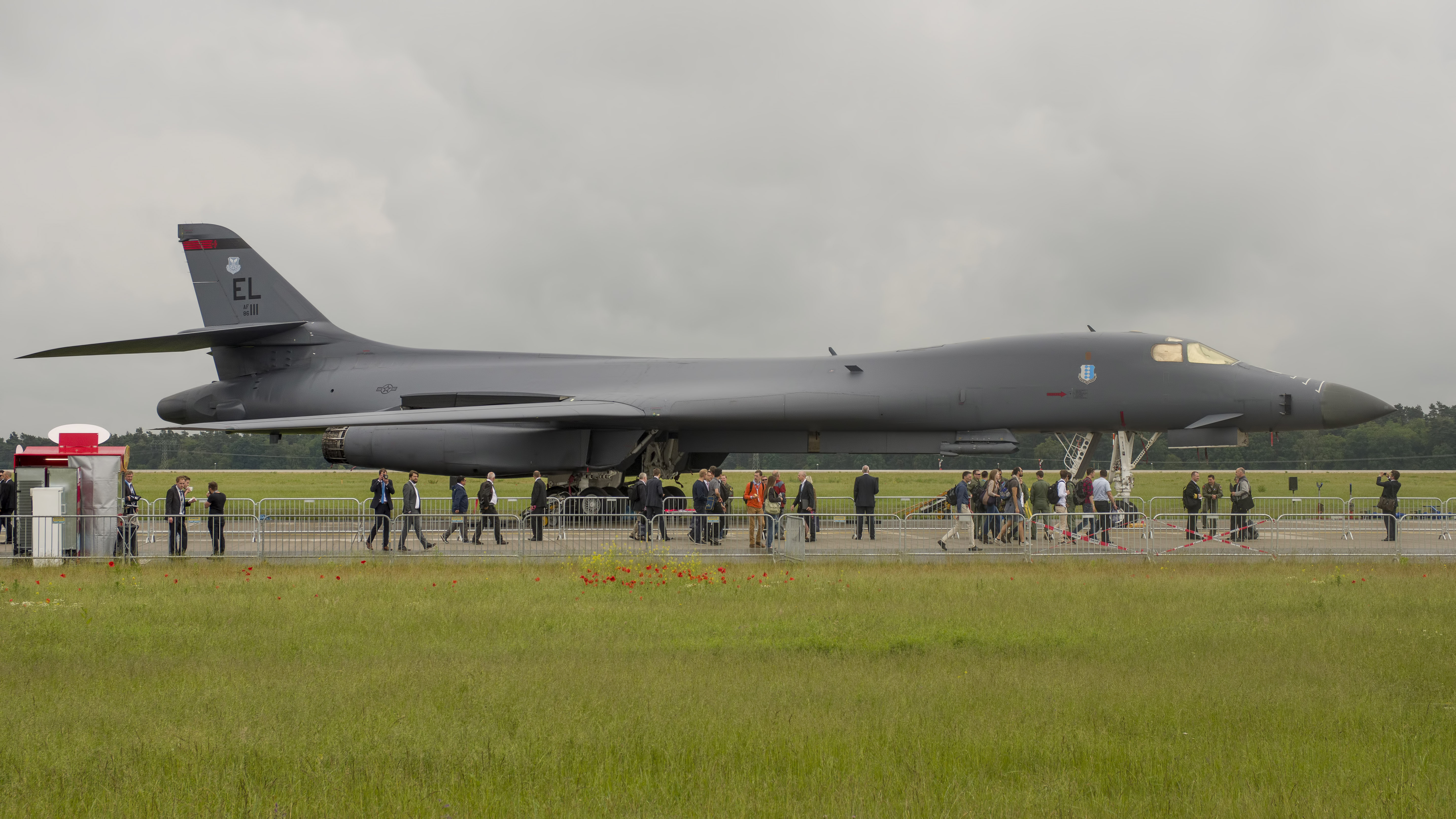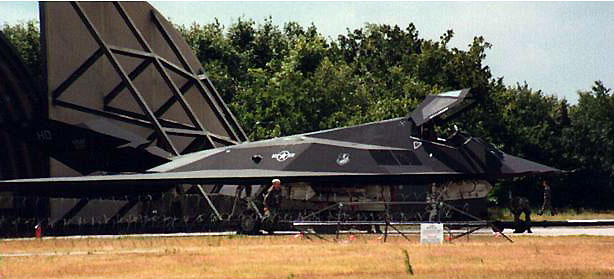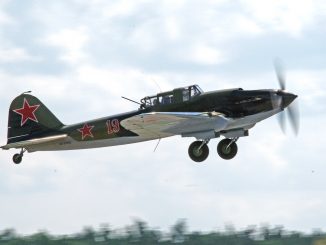
Russian Helicopters created the Ka-52 Alligator using cutting-edge Russian aviation technologies, state-of-the-art avionics and weaponry, and composite materials, while ensuring a high degree of flight safety. The helicopter has successfully passed all of its state tests and entered serial production, and is in service with the Russian Air Force.
Developing nation: Russia.
Manufacturer/designer: Russian Helicopters/Kamov Design Bureau.
Production Lines: Moscow.
Type aircraft: Attack helicoptere.
First flight: 25 June 1997.
Number built: 5(prototype) + 35(serial)
The Ka-52 Alligator is an all-weather, day-night combat helicopter. It is designed to destroy armoured and unarmoured ground targets, low-speed aerial targets and enemy front-line and tactical reserve troops, and to undertake reconnaissance missions and co-ordination of groups of military helicopters. The Alligator is equipped with stealth technologies and active IR and electronic jammers, and is designed to Russian and international standards for combat helicopters and their operation.
The Alligator has a twin-seat cockpit and can be controlled by either pilot. Its coaxial rotors provide advanced flight abilities and allow it to manoeuvre rapidly in tight airspace to secure a favourable attacking position.
Two VK-2500 gas turbine engines enable the helicopter to fly above 5,000 metres. It has a static ceiling of 4,000 metres, and can take off and land in hot environments and high altitudes. The ??-52 Alligator can also be deployed in cold climates and icy conditions.
The Ka-52 Alligator is equipped with state-of-the-art avionics developed mainly by Concern Radioelectronic Technologies, also a Rostec company. The Crossbow (Russian: Arbalet) radar system can overcome military challenges at any time of day or night and in any weather conditions, including deliberate or natural radio electronic interference. Crossbow gives Ka-52 pilots a radar facility map of the local terrain, making it possible to identify and avoid hazardous wet and turbulent zones, and also to rapidly locate targets. Radioelectronic Technologies also supplies the Alligator with Hunter (Russian: Okhotnik) series systems for laser-guided weapons and video imaging processing for missile guidance. Thanks to these systems, the helicopter can rapidly identify and simultaneously engage two targets, guiding Attack (Russian: Ataka) and Whirlwind (Russian: Vikhr) missiles with high accuracy. The SAU-800 autopilot system allows for manual and automatic piloting.
The Ka-52 is equipped with powerful offensive weapons that can be configured for different military missions. The rapid-fire unit NPPU-80 with 2A42 30mm gun is located on the helicopter’s starboard. The large number of weapons options is supported by six mounting points for aircraft guns, missiles and rockets and various aerial bombs, as well as additional fuel tanks. The total weight of the payload is 2,000kg.
The Alligator’s other advantages include a high degree of protection for the crew, state-of-the-art automated systems that make piloting easier, and ease of ground maintenance. Powerful armoured protection and ejection seats unique fort its class make the Ka-52 Alligator one of the safest helicopters for crew, while the helmet-mounted target designation system means the helicopter can fly military missions around the clock and at any time of year, significantly reducing pilots’ workload. The helicopter is equipped with satellite navigation, with colour displays in the cockpit conveying a wide range of information, including a digital map of the terrain.
Like the Mi-24 and Mi-35M, the Alligator has been designed for outside storage.
The Ka-52 Alligator combat helicopter is without doubt one of the most advanced military helicopters in its class. It combines cutting-edge developments fr om Rostec companies with the traditional virtues of Russian-built helicopters. The ?i-8/17, ?i-24, ?i-35? and ?a-32 helicopters are in high demand around the world, particularly in regions with complex weather conditions, wh ere helicopters are becoming essential.
General characteristics Ka-50 and Ka-52
- Crew: One (for Ka-52: two)
- Length: 16.0 m (52 ft 6 in)
- Rotor diameter: 14.5 m (47 ft 7 in)
- Height: 4.93 m (16 ft 2 in)
- Disc area: 330.3 m² (3,555 ft²)
- Empty weight: 7,700 kg (17,000 lb)
- Loaded weight: 9,800 kg (21,600 lb)
- Max. takeoff weight: 10,800 kg (23,810 lb)
- Powerplant: 2 × Klimov TV3-117VK turboshafts, 1,641 kW (2,200 shp) each
- For Ka-52:
- Loaded weight: 10,400 kg (22,930 lb)
Performance
- Never exceed speed: 350 km/h (189 knots, 217 mph) in dive
- Maximum speed: 315 km/h (170 knots, 196 mph) in level flight
- Cruise speed: 270 km/h (146 knots, 168 mph)
- Range: 545 km (339 miles)
- Ferry range: 1,160 km (720 mi) with 4 drop tanks
- Service ceiling: 5,500 m (18,000 ft)
- Rate of climb: 10 m/s (32.8 ft/s)
- Disc loading: 30 kg/m² (6 lb/ft²)
- Power/mass: 0.33 kW/kg (0.20 hp/lb)
Armament
- 1x mobile semi-rigid 30 mm Shipunov 2A42 cannon (460 rounds total, dual feeding AP or HE-Frag)
- A variety of payloads on the four under-wing hardpoints, including 23 mm UPK-23-250 gun pods (240 rounds each), 2 x APU-6 Missile racks, able to accommodate a total of 12 9K121 Vikhr anti-tank missiles, Vympel R-73 (NATO: AA-11 Archer) air-to-air missiles, 80 x 80 mm S-8 rockets and 20 x 122 mm S-13 rocket, Kh-25 semi-active laser guided tactical air-to-ground missiles, presumably S-25/S-25L high caliber rockets, 4x 250 kg (550 lb) bombs or 2x 500 kg (1,100 lb) bombs, 500 L (130 US gal) external fuel tanks. Reportedly, twin Igla light air-to-air missile launchers under each wingtip countermeasure pod (total 4 missiles). Maximum total payload 2,000 kg.
- Two pods on the wingtips with flare and chaff countermeasure dispensers, 4 UV-26 dispensers each (total 512 chaff/flare cartridges in each pod)
All pictures courtesy of Zijde Aviation Photo and Publishing, Rob Vogelaar / Marcel van Leeuwen





